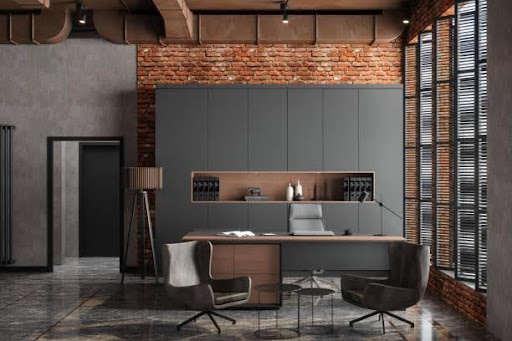Introduction to Desk Table Design
In the modern era, where workspaces have evolved from traditional offices to versatile home setups, the importance of desk table design cannot be overstated. A well-designed desk table not only serves as a functional workspace but also enhances productivity and complements the overall aesthetics of the environment. From minimalist designs to ergonomic innovations, the realm of desk table design has witnessed significant evolution, catering to diverse user preferences and requirements.
Understanding the Evolution of Desk Table Design
Historically, desk tables have undergone a fascinating transformation, mirroring the societal shifts and technological advancements of their times. Early desk tables were often bulky and ornate, symbolizing status and wealth. However, with the advent of industrialization and the rise of office culture, desk tables became more standardized and utilitarian, focusing primarily on functionality rather than ornamental value.
In recent decades, the proliferation of technology and the increasing emphasis on ergonomics have revolutionized desk table design. Today’s designers prioritize versatility, comfort, and style, catering to the needs of a diverse range of users, from remote workers to creative professionals.
Key Elements of Innovative Desk Table Design
1. Ergonomics: One of the defining features of contemporary desk table design is its emphasis on ergonomics. Designers recognize the importance of creating workspaces that promote comfort and well-being, thereby enhancing productivity and reducing the risk of musculoskeletal disorders. Adjustable height desks, ergonomic chairs, and integrated cable management systems are just a few examples of how designers are prioritizing ergonomics in desk table design.
2. Space Optimization: With the increasing prevalence of compact living spaces and the rise of remote work, there’s a growing demand for desk tables that optimize space without compromising functionality. Foldable desks, modular units, and multi-functional designs allow users to make the most of limited space while maintaining a clutter-free work environment.
3. Sustainable Materials: As environmental consciousness continues to grow, designers are incorporating sustainable materials into table design. Bamboo, reclaimed wood, and recycled plastics are being used to create eco-friendly desk tables that not only reduce environmental impact but also add a touch of natural beauty to the workspace.
4. Integration of Technology: In today’s digital age, desk tables are more than just surfaces for writing or typing. Integrated charging ports, built-in cable management systems, and wireless charging capabilities are becoming standard features in modern desk table design, catering to the needs of tech-savvy users who rely heavily on electronic devices.
5. Customization and Personalization: Recognizing that individual preferences vary widely, designers are offering customizable desk table options that allow users to personalize their workspace according to their unique needs and aesthetic preferences. From customizable finishes to modular components, these customizable desk tables empower users to create a workspace that truly reflects their personality and work style.
Innovative Desk Table Designs Around the World
1. Scandinavian Minimalism: Scandinavian design is renowned for its simplicity, functionality, and understated elegance. Scandinavian-inspired desk tables often feature clean lines, minimalist aesthetics, and natural materials such as wood and metal. These timeless designs seamlessly blend into a variety of interior styles, making them a popular choice for modern workspaces.
2. Japanese Zen Influence: Drawing inspiration from the principles of Zen philosophy, Japanese desk tables prioritize tranquility, simplicity, and harmony. These designs often incorporate natural elements such as wood and bamboo, as well as traditional craftsmanship techniques such as joinery. Japanese-inspired desk tables promote a sense of calm and balance, creating an ideal environment for focused work and contemplation.
3. Industrial Chic: Inspired by the raw, unfinished look of industrial spaces, industrial chic desk tables combine rugged materials such as steel and reclaimed wood with sleek, modern design elements. Exposed hardware, distressed finishes, and minimalist silhouettes are characteristic features of industrial chic desk tables, adding a touch of urban sophistication to any workspace.
4. Futuristic Innovations: Looking ahead, modern desk table design is poised to embrace even more futuristic innovations, blurring the lines between furniture and technology. Concepts such as augmented reality-enabled desks, interactive surfaces, and adaptive lighting systems promise to revolutionize the way we interact with our workspaces, creating immersive and dynamic environments that inspire creativity and productivity.
Conclusion
In conclusion, desk table design has evolved significantly over the years, driven by technological advancements, changing work patterns, and evolving aesthetic preferences. From ergonomic innovations to sustainable materials, designers are continually pushing the boundaries of creativity and functionality to create desk tables that not only meet the needs of modern users but also enhance their overall workspace experience. As we look to the future, the possibilities for innovative desk table design are truly limitless, promising to redefine the way we work, collaborate, and create.
The Integration of Technology
In the digital age, technology is an integral part of the work environment, and desk table designs are evolving to accommodate this seamlessly. Smart desks, equipped with integrated charging ports, wireless charging pads, and cable management solutions, are becoming increasingly popular. These designs not only eliminate clutter but also contribute to a more streamlined and organized workspace. Additionally, some desks are equipped with built-in touch controls, allowing users to adjust settings such as desk height, lighting, and even monitor positions with a simple touch.
